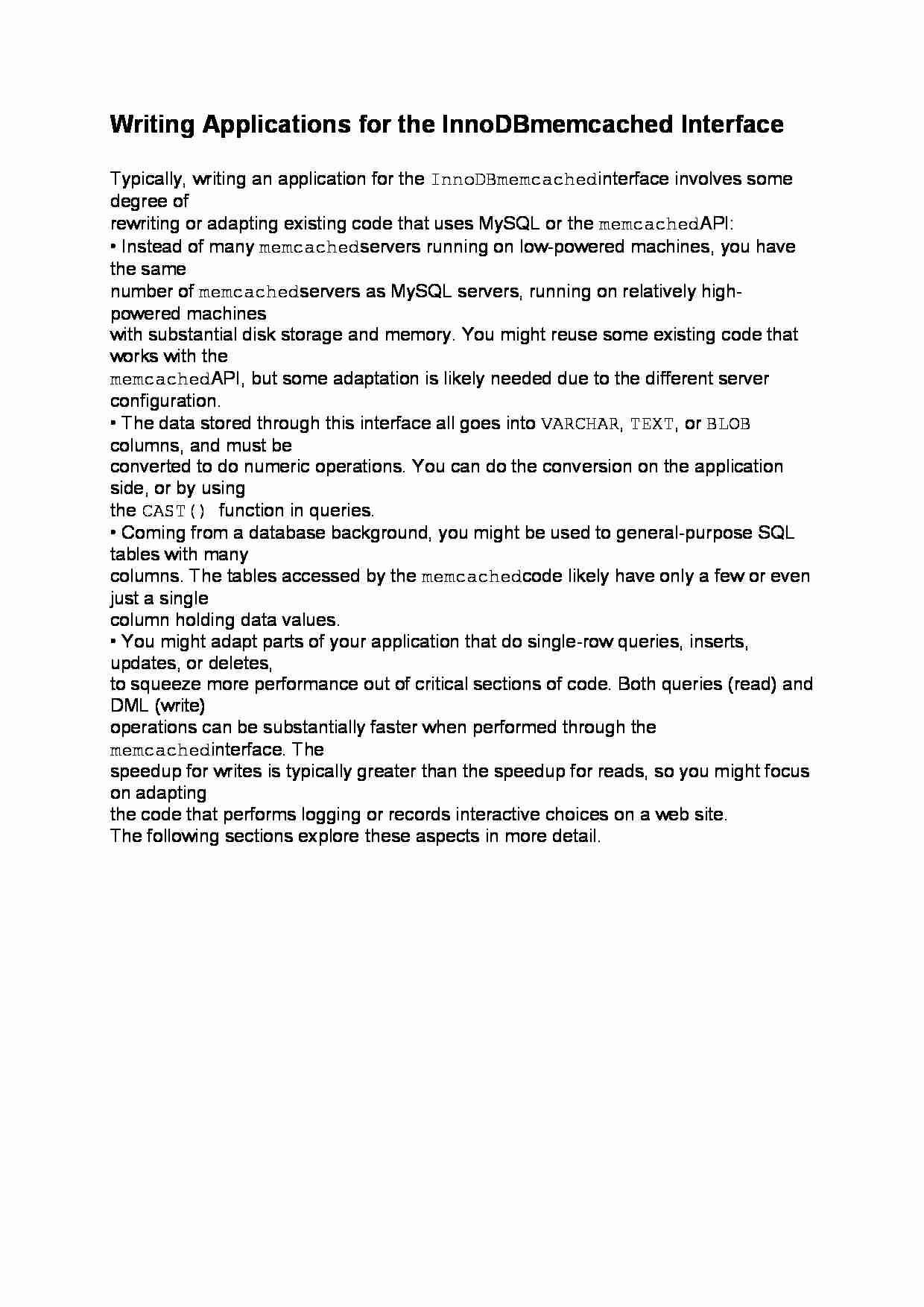
Writing Applications for the InnoDB memcached Interface
Typically, writing an application for the InnoDB memcached interface involves some degree of
rewriting or adapting existing code that uses MySQL or the memcached API:
• Instead of many memcached servers running on low-powered machines, you have the same
number of memcached servers as MySQL servers, running on relatively high-powered machines
with substantial disk storage and memory. You might reuse some existing code that works with the
memcached API, but some adaptation is likely needed due to the different server configuration.
• The data stored through this interface all goes into VARCHAR, TEXT, or BLOB columns, and must be
converted to do numeric operations. You can do the conversion on the application side, or by using
the CAST() function in queries.
• Coming from a database background, you might be used to general-purpose SQL tables with many
columns. The tables accessed by the memcached code likely have only a few or even just a single
column holding data values.
• You might adapt parts of your application that do single-row queries, inserts, updates, or deletes,
to squeeze more performance out of critical sections of code. Both queries (read) and DML (write)
operations can be substantially faster when performed through the memcached interface. The
speedup for writes is typically greater than the speedup for reads, so you might focus on adapting
the code that performs logging or records interactive choices on a web site.
The following sections explore these aspects in more detail.
... zobacz całą notatkę



Komentarze użytkowników (0)